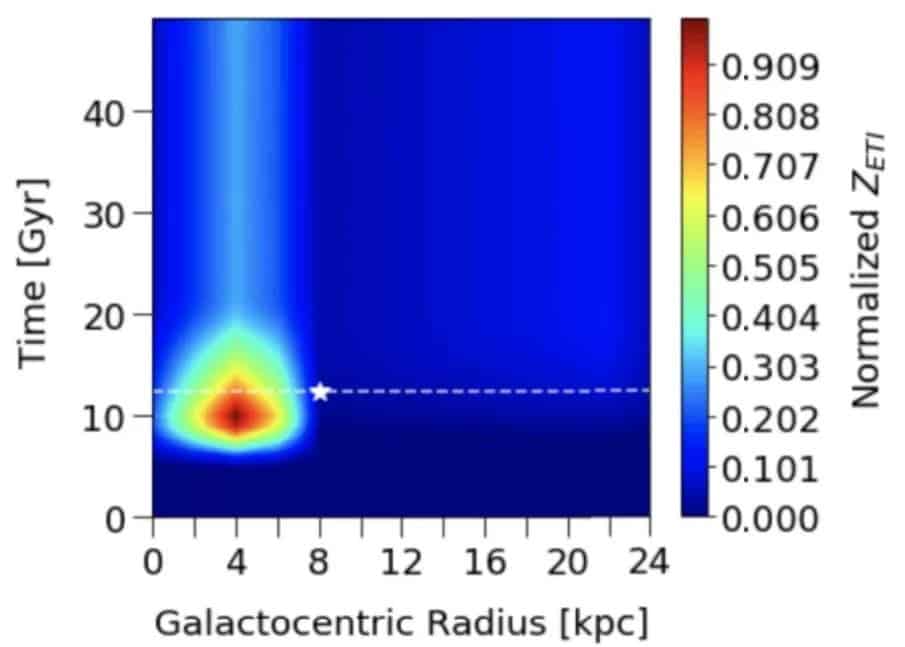
Are there other intelligent lifeforms in the universe besides humans capable of founding a civilization? That’s the million-dollar question that people of all walks of life have, to their best of their ability, attempt to answer. There are many theories that attempt to explain the utter lack of, well, alien signals. For instance, one new study concludes that intelligent life may have appeared several times in the Milky Way, however, the vast majority of these civilizations have wiped themselves out already.
Ever since people first realized we are all living on a giant rock orbiting one of many stars, a heartbreaking thought must have crept the mind: we’re not that special after all. But since there are countless stars in the Milky Way, and countless galaxies in the universe, there must be other civilizations out there. This thought comes as a consolation, so we might not be the only ones drifting through the frightening darkness of outer space.
But if it’s true that we’re not that special after all, where is everybody else? Enrico Fermi, the creator of the world’s first nuclear reactor, thought about this long and hard, and his correspondence with fellow scientists on the subject has remained known in history as the ‘Fermi Paradox’ — the notion that there is a virtually limitless number of stars, but nevertheless you don’t see any life floating around besides us. Where is everybody?
The question is a valid one when considering:
- There’s nothing special about our sun – it’s young, medium-sized and similar to billions of other stars in our galaxy.
- It’s believed there are between 100 and 400 billion planets in the Milky Way. Considering intelligent life appeared on one, it’s reasonable to consider there should be at least some other kind of intelligent life elsewhere in the galaxy.
- Millions of years of technological progress mean that an intelligent species should have the capability to travel to distant stars and even other galaxies. Just look at how our world has changed in the past 100 years alone.
- According to mathematicians Duncan Forgan and Arwen Nicholson from Edinburgh University, self-replicating spacecraft traveling at one-tenth of the speed of light — admittedly a quick speed — could traverse the entire Milky Way in a mere 10 million years. This means that civilization could potentially colonize the whole galaxy in a mere couple of millions of years. Except it didn’t happen.
Then there’s the Drake equation, first proposed in 1961 by American astronomer and astrophysicist Frank Drake, which describes the variables involved in fostering intelligent life. This equation estimates the number “N” of civilizations in the Milky Way based on variables such as the rate of star formation, the number of planets in solar systems that may support life, or the necessary technological prowess to signal a civilization’s existence.
Drake’s equation was made famous by the late Carl Sagan, who featured it during an episode of his timeless series Cosmos. But since Sagan first talked about Drake’s equation, much has changed. Thanks to observations by the Kepler telescope, we now have a much firmer grasp of how many Earth-like worlds may be out there.
In a new study, researchers affiliated with NASA’s Jet Propulsion Laboratory and Caltech, as well as a high school student, have updated Drake’s equation with all the new things scientists have learned in the past decades, including the prevalence of sun-like stars harboring Earth-like planets or the frequency of supernovas that are unfriendly to life.
When they modeled the evolution of the Milky Way, the researchers found that life was most likely to emerge around 13,000 light-years from the galactic centers, where there is the greatest density of sun-like stars. The optimal time frame for the development of alien civilizations was also estimated at 8 billion years after the formation of the galaxy. For comparison, Earth is about 25,000 light-years from the galactic core and complex intelligent life evolved around 13.5 billion years after the Milky Way formed.

In other words, this study suggests that there are other regions of the Milky way where life is more likely to appear than in our corner of the galaxy. What’s more, other civilizations might have had a five billion-year headstart. The problem is they may have had a headstart for their self-annihilation.
According to the researchers, most civilizations that have appeared before us have likely self-annihilated. Other civilizations that are still active in the galaxy are likely young, due to the propensity of intelligent life to eradicate itself. Over a long-enough timeframe, the probability of self-annihilation borders on certainty.
“As we cannot assume a low probability of annihilation, it is possible that intelligent life elsewhere in the Galaxy is still too young to be observed by us. Therefore, our findings can imply that intelligent life may be common in the Galaxy but is still young, supporting the optimistic aspect for the practice of SETI (search for extraterrestrial intelligence),” the authors wrote in their study that appeared in the pre-print server arXiv.
“Our results also suggest that our location on Earth is not within the region where most intelligent life is settled, and SETI practices need to be closer to the inner Galaxy, preferably at the annulus 4 kpc (kiloparsec) from the Galactic Center.”
The search for alien life is nowhere settled, though. The study’s biggest limitation is its sample size of confirmed civilizations: just one. Humans are biased to think that other civilizations might behave just like us. As such, these inherent biases may cloud our judgment, believing that other civilizations might also nuke themselves out of existence.

![{"shape": [8200, 8200, 3]}](https://cdn.zmescience.com/wp-content/uploads/2025/01/Euclid_s_view_of_spiral_galaxy_IC_342_pillars-350x250.jpg)




